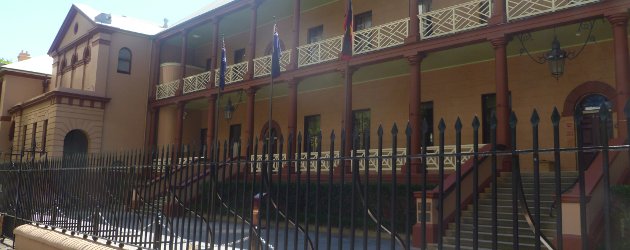 Welcome to the Tally Room’s guide to the 2015 New South Wales state election. This guide includes comprehensive coverage of each seat’s history, geography, political situation and results of the 2011 election, as well as maps and tables showing those results.
Welcome to the Tally Room’s guide to the 2015 New South Wales state election. This guide includes comprehensive coverage of each seat’s history, geography, political situation and results of the 2011 election, as well as maps and tables showing those results.
Table of contents:
- Legislative Assembly seat profiles
- Legislative Council profile
- Political history
- Recent events
- Key seats
- Redistribution
- Frequently asked questions
- Contact
Legislative Assembly seat profiles
Seat profiles have been produced for all 93 Legislative Assembly electoral districts. You can use the following navigation to click through to each seat’s profile.
Legislative Council profile
The New South Wales Legislative Council is elected using a system of proportional representation, with all MLCs elected to represent the entire state. 21 MLCs are elected every four years for an eight year term, with half of the upper house up for election at each lower house election.
This guide includes a history of the elected Legislative Council, list of sitting MLCs, list of winnable candidates, 2011 results and assessment of the parties’ chances.
Political history
New South Wales politics has been dominated by the Labor Party ever since 1941. In the 74 years since that election, the Coalition has only governed in New South Wales for just over 22 years, while the ALP has been in government for over 50 years.
The ALP governed New South Wales from 1941 to 1965, with five successive Premiers continuing the government.
Liberal leader Bob Askin led the Liberal-Country coalition to power in 1965. He ruled for the next decade, until his retirement in 1975. Two other Liberal Premiers held office before they lost power in 1976.
Labor again held power from 1976 to 1988, first with Neville Wran until 1986, and then Barrie Unsworth.
Nick Greiner led another conservative coalition to power with a landslide victory in 1988. The government held its majority for one term, and then served another term as a minority in a hung parliament, with Greiner succeeded by John Fahey in 1992.
The last Labor government held power from 1995 to 2011, first led by Bob Carr until 2005, then Morris Iemma until 2008, then Nathan Rees until he was replaced by Kristina Keneally in 2009.
The Liberal/National coalition won power in 2011. Barry O’Farrell served as Premier until 2014, when he was replaced by Mike Baird.
Recent events
Over the last four years, Labor, Liberal and Nationals have all underwent leadership changes, with Barry O’Farrell, Andrew Stoner and John Robertson all being replaced throughout 2014.
In addition, there have been seven by-elections – four of which saw the party holding that seat change hands.
Key seats
Labor needs to win 29 seats to win a majority, and the Coalition needs to limit their losses to less than 25 to hold on to theirs. Current polling suggests Labor will regain a number of seats. There are a large number of key seats that are Labor-Coalition races, along with a handful of seats being contested by independents or the Greens.
Redistribution
New South Wales electoral boundaries were redistributed for the first time in eight years. The south-western NSW seat of Murrumbidgee was abolished, while the seats of Newtown and Summer Hill were created out of Marrickville in the inner west of Sydney.
Two seats changed from Labor to Liberal seats, while six seats changed names (in addition to the abolition of Murrumbidgee and creation of Summer Hill).
Frequently asked questions
This guide includes a lot of content and I regularly get asked questions about how it is structured and why I make decisions about what information is included.
Please also post here any questions about the structure of the guide or suggestions about improvements.
Contact
If you have a correction or an update for a single electorate page, feel free to post a comment. You can also send an email by using this form.

